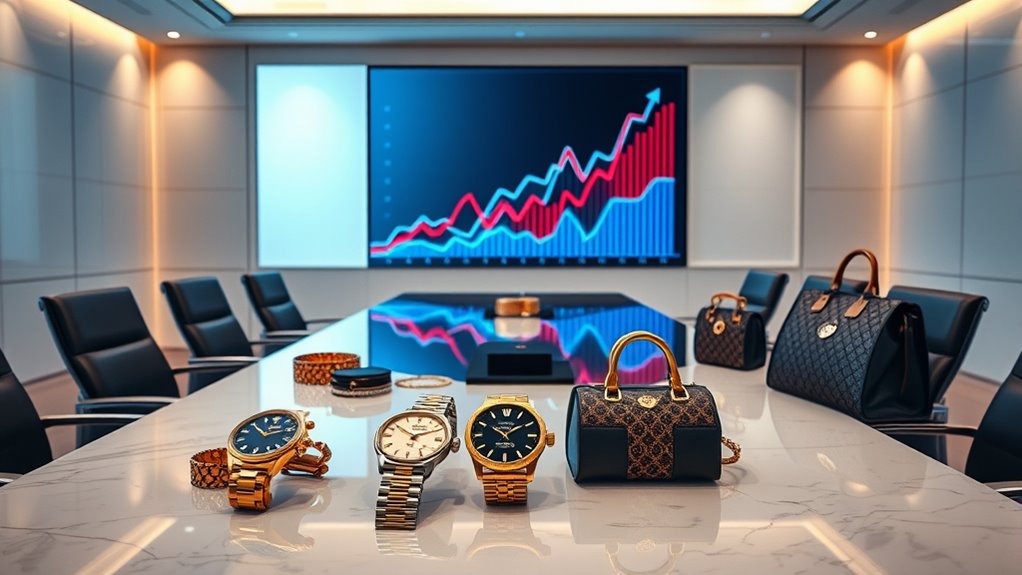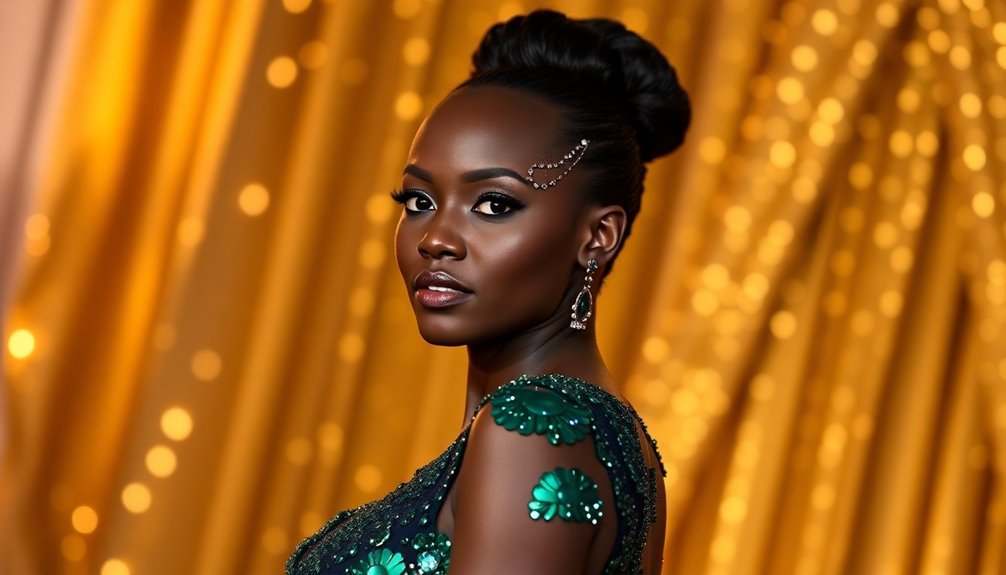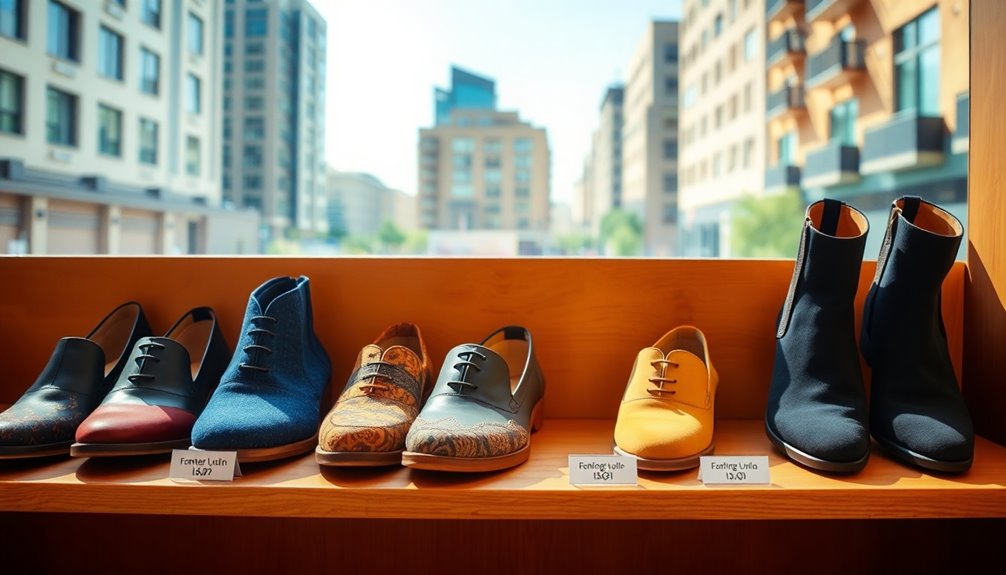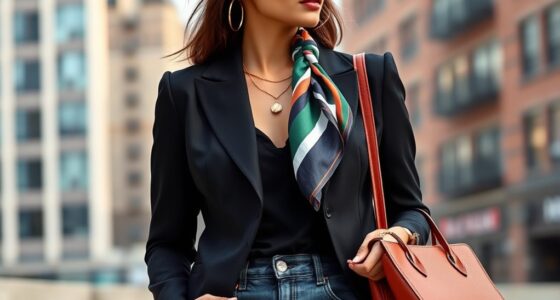In a K-shaped world, focus your luxury investment on high-net-worth consumers who maintain strong spending power despite economic shifts. Prioritize brands that emphasize experiential, personalized, and sustainable luxury offerings, especially those with a strong digital presence. Leverage the growing secondhand market and online resale platforms to diversify your portfolio. Stay alert to economic disparities and market divergence to maximize gains. Exploring these strategies further will help you navigate this complex landscape more confidently.
Key Takeaways
- Focus on high-end brands with strong digital engagement and personalized experiences to attract affluent, digitally-savvy consumers.
- Invest in luxury segments benefiting from the wealth effect, such as experiential and bespoke products.
- Leverage the growing secondhand luxury market to diversify holdings and capitalize on sustainability trends.
- Monitor economic disparities and policy impacts that may influence luxury demand and adjust strategies accordingly.
- Prioritize brands with solid market capitalization, high profit margins, and resilience during economic downturns in the luxury sector.

In a K-shaped recovery, where economic disparities deepen, luxury goods emerge as a resilient investment opportunity. As the global economy bifurcates, the wealthy continue to spend generously on high-end products, driving a projected 9.8% CAGR in luxury spending from 2025 to 2032. Your focus should be on this segment, because the strong purchasing power of affluent consumers sustains demand despite broader economic headwinds. While middle and lower-income groups tighten their belts, luxury brands report impressive sales growth, highlighting the sector’s divergence from traditional retail. This pattern underscores the importance of understanding consumer behavior—those with wealth are prioritizing individuality, sustainability, and unique experiences, which guides their purchasing choices and reinforces the sector’s resilience. Spiritual practices like meditation can also enhance well-being, making luxury experiences even more appealing to affluent consumers.
You should recognize that, in this environment, experiential luxury—think exclusive travel, private events, and personalized services—remains a key driver for the wealthy. Their spending habits tend to be less sensitive to economic downturns, supported by the “wealth effect” where asset appreciation fuels confidence. However, if asset prices stagnate or decline, luxury spending might soften somewhat, so keeping an eye on financial markets remains essential. Meanwhile, Gen Z consumers are beginning to influence the luxury landscape, emphasizing digital engagement and convenience. This demographic’s rising wealth presents new opportunities for brands that can leverage online platforms, personalized digital experiences, and seamless omnichannel retail.
Economic inequality widens the “K-shaped” divide, favoring luxury goods and high-end financial sectors while straining broader consumer markets. This growing disparity can lead to social tensions and economic instability, which may challenge long-term growth. Yet, luxury firms continue to demonstrate strong profit margins, with brands like Hermes surpassing LVMH in market capitalization, indicating high investor confidence in exclusivity and branding power. Conversely, mid-tier and mass-market retailers face losses, credit risks, and declining sales, reinforcing the importance of focusing on luxury segments. Policymakers’ actions, such as government shutdowns or economic stimuli, often indirectly benefit luxury spending, as the affluent’s wealth remains more insulated from macroeconomic shocks.
Additionally, the secondhand luxury market is emerging as a significant growth avenue. Growing at around 10% annually, it’s projected to reach up to $360 billion by 2030. Over 28% of luxury items in consumers’ wardrobes are now purchased secondhand, driven by sustainability values and the desire for uniqueness. Online resale platforms facilitate this shift, making luxury more accessible and sustainable. This trend is backed by data indicating that over 28% of luxury items in consumers’ wardrobes are now purchased secondhand, which highlights its importance for investment strategies and brand innovation. Understanding this trend is critical, as it offers a resilient, scalable channel that aligns with shifting consumer values while providing diversification from traditional luxury retail.
Frequently Asked Questions
How Can Luxury Brands Effectively Target Diverse Income Groups?
You can target diverse income groups by tailoring your messaging and offerings to each segment’s preferences. Use personalized experiences for high-income clients, emphasizing exclusivity, craftsmanship, and sustainability. For middle-income consumers, offer certified pre-owned or accessible luxury options. Leverage data-driven insights and geographic targeting to reach specific audiences effectively. Focus on creating emotional connections and authentic stories that resonate across income levels, ensuring your brand appeals to a broader, more diverse customer base.
What Digital Strategies Are Essential for Luxury Brand Growth?
You should focus on digital presence optimization, as 40% of luxury purchases are influenced online. Prioritize personalized, AI-driven engagement to boost customer loyalty and revenue. Incorporate seamless omni-channel experiences, blending online and offline touchpoints, to deepen connections. Leverage high-quality content, influencer collaborations, and interactive visuals to amplify your brand’s reach. By continuously benchmarking against competitors and refining your digital campaigns, you’ll stay ahead in a competitive, evolving luxury market.
How Do Geopolitical Risks Influence Luxury Goods Investments?
Geopolitical risks impact your luxury goods investments by increasing market volatility and disrupting supply chains. You’ll see currency fluctuations, trade barriers, and regulatory challenges that reduce margins and slow growth in key markets like China, the U.S., and Europe. These risks also weaken consumer confidence and pricing power, making it essential for you to diversify regions, focus on innovation, and build resilience strategies to protect your investments from geopolitical shocks.
What Emerging Markets Show the Most Potential for Luxury Growth?
Imagine a rising tide lifting hidden treasures—India shines brightest among emerging markets, offering vast luxury growth potential. You’ll find opportunities in diverse client bases and experiential luxury, especially in Asia and the Middle East, where real estate prices soar. As China rebounds, your investments can ride this wave. Focus on innovation, targeted marketing, and strategic partnerships to navigate this vibrant landscape and unleash sustainable, long-term growth.
How Can Sustainability Impact Luxury Brand Valuation?
Sustainability can boost your luxury brand’s valuation by enhancing its reputation and attracting ESG-focused investors. When you embed transparent supply chains, set ambitious environmental goals, and communicate your sustainability efforts effectively, you signal innovation and responsibility. While sustainability may increase costs, your premium consumers often accept higher prices, reinforcing brand strength. Over time, these efforts differentiate your brand, elevate perceived value, and contribute positively to long-term valuation growth.
Conclusion
As you navigate this K-shaped world, think of luxury goods as your guiding star—bright, elusive, yet full of promise. By understanding the shifting landscape, you can steer your investments toward the shimmering peaks of growth while avoiding the shadowed valleys. Embrace this dynamic terrain with confidence, knowing that with the right strategy, you’ll turn fleeting opportunities into lasting treasures. In this ever-evolving mosaic, your savvy choices will be the compass that leads to prosperity.










